Toyota's Concept-i designers talk AI co-pilots and self-driving style
Toyota's Concept-i autonomous car winks at you, remembers the minutiae of your interests, and suggests detours to hang out with your friends: all in the name of getting you to trust its self-driving talents. Revealed at CES 2017 in Las Vegas, CA. this week, on the one hand it's a striking design study intended to explore the new possibilities unlocked when you're liberated from the tyranny of everyday driving. At the same time, though, it addresses a more fundamental issue, around trust in technology and the fear of the expert. I caught up with Ian Cartabiano, lead designer at the Toyota CALTY studio, and William Chergosky, interior lead designer, to find out why Concept-i is so important.
Space, as we've seen both autonomous and electric concepts flirt with before, is a different luxury when compared to traditional gasoline vehicles. An electric drivetrain can be spread in different places – the batteries under the floor; the motors pushed to the extremes of the wheels or integrated into them completely – versus an internal combustion engine, which suddenly opens up a cabin in new ways. Meanwhile, the way you use that space changes when you don't have to focus on driving and can allow the car to drive itself.
The scissor-lift doors are a show-car spectacle, but do emphasize that interior volume. Meanwhile, the way the interior structure of the dashboard extends out and through into the curve of the car's bodywork – the glass wrapping around that shape – is indicative of one of the more unusual design aspects: Toyota's design team started with the interior space first, and then figured out the exterior around it. Usually, it would be the other way around.
You might associate gold on cars with gaudy Lexus badging, but Toyota has been heavy-handed with metallic effects to underscore the premium intent. Through it, and the porcelain white bodywork that's almost surgically-inspired in its Space 2001 purity, glow multicolored LEDs. When you start the Concept-i up, light flows from the cabin outwards, streaming into the exterior bodywork.
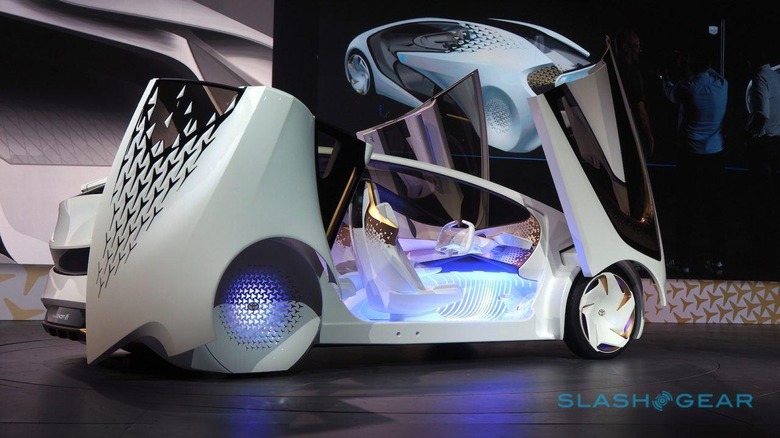
It makes for an eye-catching CES concept, of course, but it also has a practical use. The rear of the car is built around an LED display, which can spell out the autonomous system's intentions to those around it. On the nose, meanwhile, there's a huge banner that makes plain whether human or computer is in charge.
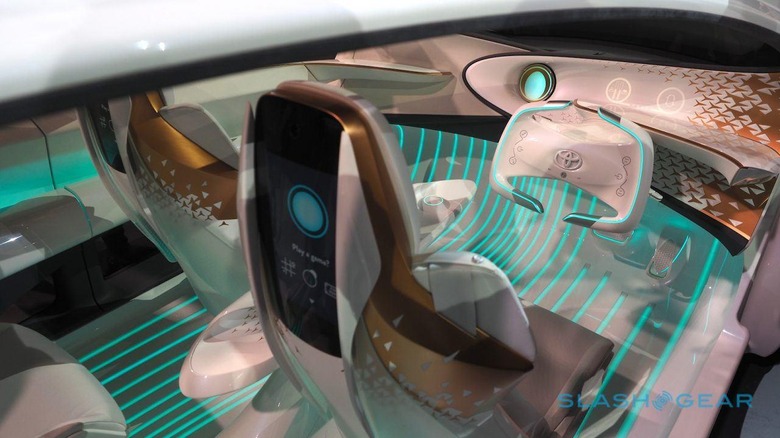
Inside, it's a glowing disco womb, Toyota at the same time trying to wow and lull you. Gold accents continue to hammer home the high-end feel, while the Concept-i's artificial intelligence – dubbed Yui – sets out its stall as a co-pilot rather than just a jumped-up infotainment system. From the moment you wake the car with a "handshake" over the center console, to the wobbly wave Yui gives you when you turn it off at your destination, it's all about charming you into trusting the machine.
Toyota hasn't got a demo-ready version of its holographic head-up display ready yet, and was mimicking the effect by parking the Concept-i in front of big screen and showing sample graphics on that, instead. The fundamentals are straightforward, though, with bold overlays like maps and point-of-interest call-outs shown large when the car is stationary, and excerpts of vital data with warning overlays for pedestrians and cyclists when the driver is in control. Toyota expects there to be gradations between fully-autonomous and non-autonomous, and so much of Yui's role is acting as co-pilot, highlighting potential hazards that might otherwise have gone unnoticed.
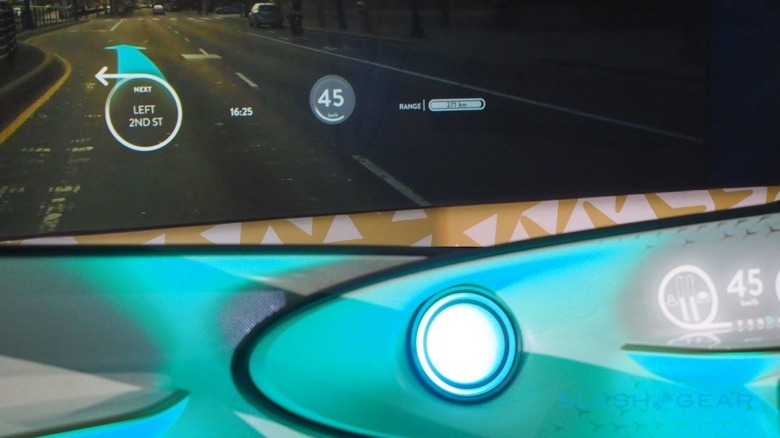
How it does that is particularly interesting. I've driven a lot of cars over the past couple of years, affordable through expensive, but the unifying element is usually that the safety systems are blunt. Loud beeps or warning tones; sudden vibration or sharp torquing through the steering wheel; even seats that buzz angrily on one side or the other to tell you hey, hold up, there's another car coming.
Yui's warnings are far more subtle, which Toyota's research suggests, perversely, is more effective in the long run. Cross-traffic warnings when reversing, for instance, take the form of a nudge in the respective shoulder. Flurries of light effects and a bouncing exclamation point flag hazards in a way intended to be far less jarring.
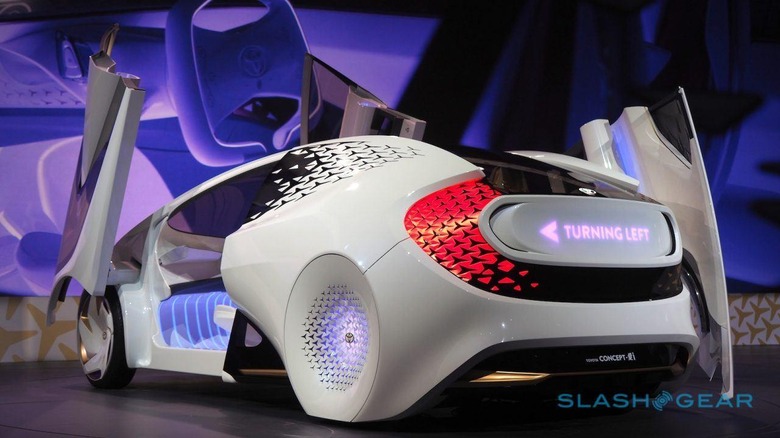
At first, I found the Yui companion a little cutesy. Then again, I'm arguably not the person Toyota's AI is trying to win over. While I have some lingering concerns about autonomous vehicles, I'm nonetheless open to the idea – I still believe that, in many conditions, self-driving cars are more safe and capable than most humans behind the wheel.
Not everybody is so trusting. During Toyota's press conference, one of the company's autonomous researchers posed the rhetorical question of just how perfect a self-driving car needed to be before society at large would be content letting it loose on public roads. Or, to be more blunt, what fraction of the road deaths we currently see each year at the hands of human drivers would we be content with a robotic driver causing.
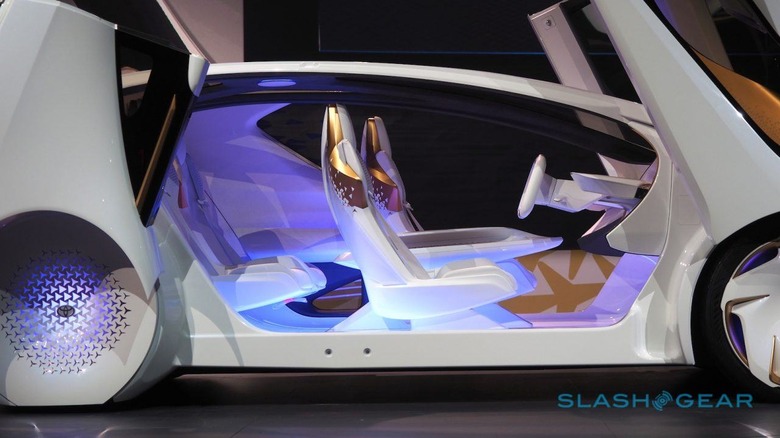
Our tolerance for machines making mistakes, the research shows, is shockingly low. A human driver might fall asleep at the wheel, be pilloried individually for plowing into a playground of children, and their license revoked forever, but we wouldn't expect every human driver to hand over their keys. Yet – for better or worst – we hold autonomous cars to a higher standard, and one high-profile accident from one vehicle could undermine the acceptance of the technology as a whole.
Self-driving cars, therefore, don't just need to prove themselves to regulators, they have to win over the hearts and minds of the everyman. Doing that as a cold, impersonal, and crisply efficient machine is tough. Better, maybe, to engage on an altogether more human level, their super-human talents couched in a warm and cuddly persona that, though saccharine, is far more likely to be accepted as part of the family.
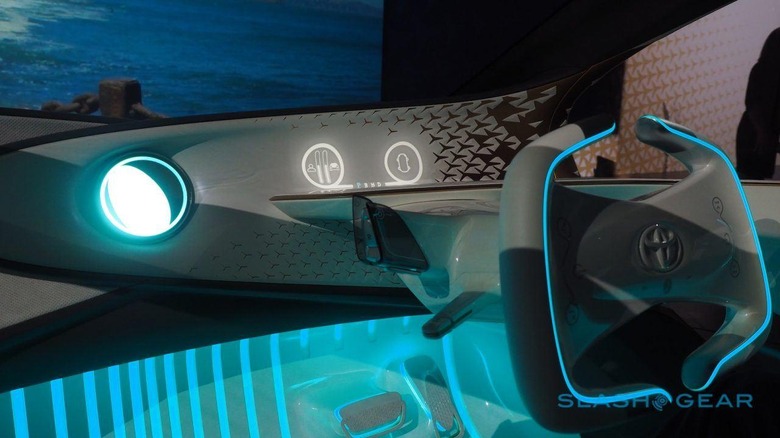
The Concept-i is an extreme version of that idea, hyper-exaggerated to drive home Toyota's point. Production self-driving cars aren't going to be wildly-glowing, scissor-door swinging, spacecraft-aping pods of wild design, at least not any time soon: they'd end up so distracting to human drivers that there'd be more crashes on the road, not less.
All the same, there are definitely takeaways. The glowing purple lighting, which Toyota has spread lavishly inside and out to represent when the car is in autonomous mode, is something it intends to carry through to production vehicles, the automaker tells me. It might not be so expansively implemented, but the company is insistent that other road users need to know at a glance whether the car is driving itself or under human control.
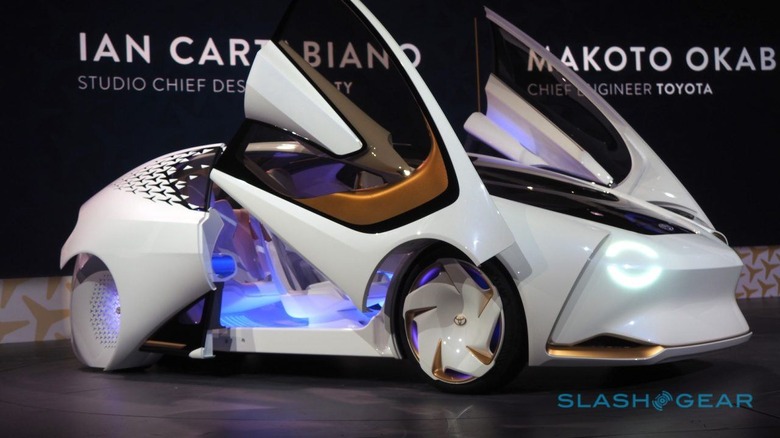
Similarly, the idea of a more intelligent and personable interface is another aspect Toyota feels strongly about. Again, whatever the production version of Yui turns out to be probably won't have hundreds of LED pinstripes to cavort around, but there's a real belief that our interaction with autonomous vehicles needs to be more than just picking a location on a map and telling the car "take me there." That, to Toyota's mind, is a wasted opportunity, when you could be making better use of the world you live in and the excess of attention you have when not being expected to focus on driving.
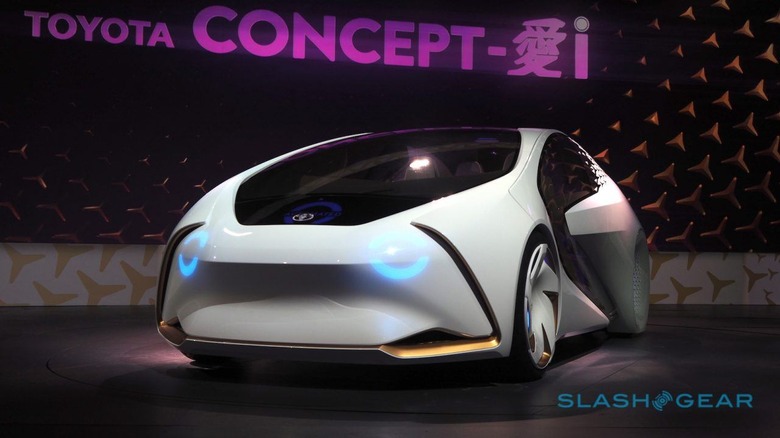
The result is an autonomous car with a veil of humility around its expertise, and which embodies a typically Japanese sense of discreet service. It'll never make it to production in its current form, naturally, but Toyota could do much worse than borrow elements of the design, the communicative bodywork, and the concept of the co-pilot for production vehicles. Whether we'll be chatting with an amorphous blob desperate to serve us remains to be seen, but there's no denying that autonomous vehicles will need to do more than just pass a driving test before we trust them implicitly.
